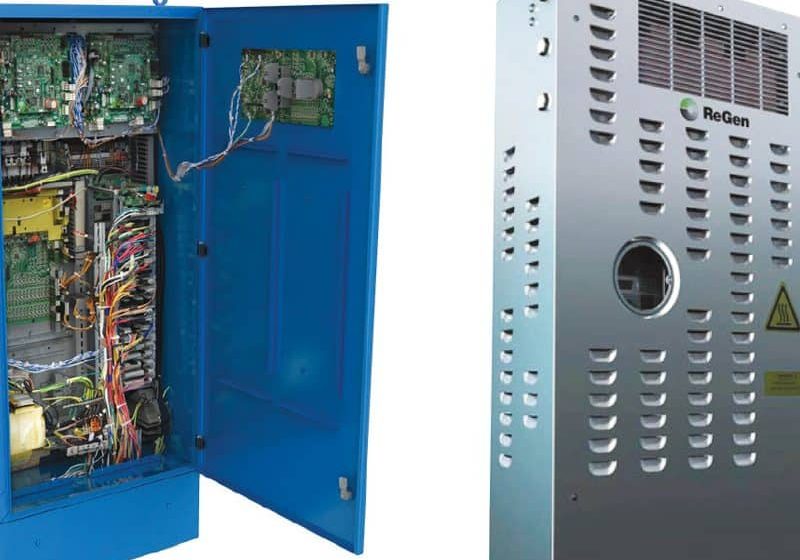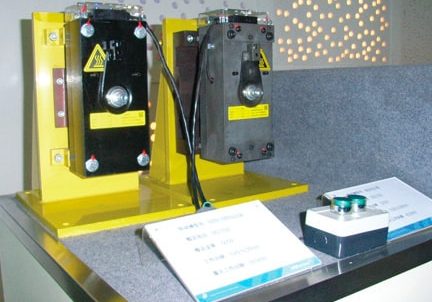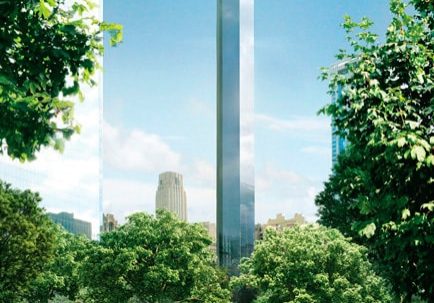Chicago’s Illinois Institute of Technology plays host to the Council on Tall Buildings and Urban Habitat’s (CTBUH) annual symposium, ceremony and dinner.
On November 7, 2013, the Council on Tall Buildings and Urban Habitat (CTBUH) held its 12th Annual Awards Symposium, Ceremony and Dinner, co-hosted by the Illinois Institute of Technology (IIT) and held on the IIT campus in Chicago. The symposium consisted of 12 presentations, which were divided into three groups of four, with a brief question-and-answer session following each session. The lobby adjacent to the symposium auditorium housed an exhibition featuring the Best Tall Building finalists and winners from each region (Americas, Europe, Middle East and Africa, and Asia and Australasia), Innovation Award winners and finalists, and the winner of the CTBUH 10 Year Award. The Awards Ceremony and Dinner took place following the conclusion of the symposium. One of the many intriguing aspects of the symposium is that the invited speakers always reflect the diversity of the professional audience in attendance, which included architects, engineers, owners and developers.
The first session began with a presentation by American architect Henry Cobb, (founding partner of Pei Cobb Freed and Partners), winner of the 2013 CTBUH Lynn S. Beedle Lifetime Achievement Award, which “recognizes an individual who has made extraordinary contributions to the advancement of tall building and the urban environment during his or her professional career.” This was followed by presentations on three of the Best Tall Building Finalists, titled “Tree House Residence Hall: Students in the Sky” (Boston), “New Babylon: Refurbishing a 1970s Icon” (The Hague, Netherlands), and “Gate Towers: Creating Urban Habitat in the Sky” (Abu Dhabi). The Tree House Residence Hall and New Babylon presentations were given by members of the architectural firms associated with the projects: B.K. Boley, partner, ADD Inc., and Roberto Meyer, director and partner, MVSA Architects, respectively. Gurjit Singh, chief development officer of Aldar Properties, presented the Gate Towers project. The most engaging presentation of this session, and perhaps the best of the symposium, was that given by Cobb. He gave a sharp, well-illustrated and focused account of his remarkable 50-year career in only 20 min., the time allotted to each speaker.
The second session was originally designed to focus on tall-building technology and include a presentation on 30 St. Mary Axe, or “The Gherkin” (London), winner of the inaugural CTBUH 10 Year Award. Unfortunately, this presentation, which had been listed in the initial publicity as “to be confirmed,” was not part of the final agenda. CTBUH replaced it with a presentation by Roy Liu (associate director of Gravity Partnership Ltd.) on the C&D International Tower (Xiamen, China), which was an Asia and Australasia Best Tall Building Finalist. The award 30 St. Mary Axe received was established to focus the industry on performance against design intent, recognizing “proven value and performance across one or more of a wide range of criteria over a period of at least 10 years,” noted CTBUH. This new award was intended as a reflection on buildings that have been completed and operational for at least a decade and an acknowledgement of “projects that have performed successfully long after the ribbon-cutting ceremonies have passed.”
The three other presentations in the second session retained the original focus on tall-building technology. These included “Broad Sustainable Building Prefabricated Construction Method: 30 Floors in 15 Days” by Shuguang Wang (executive manager, BROAD Group) and “KONE UltraRope: Enabling 1,000 Meters and Beyond” by Johannes de Jong (head of Technology, KONE), both winners of the 2013 Tall Building Innovation Award. The final presentation was “Geotechnics for the World’s Tallest” by Clyde N. Baker, Jr. (senior principal engineer, AECOM, retired), winner of the Fazlur R. Kahn Lifetime Achievement Award. The Kahn Lifetime Achievement Award “recognizes an individual for his/her demonstrated excellence in technical design and/or research that has made a significant contribution to a discipline(s) for the design of tall buildings and the built urban environment.” The Innovation Award (introduced in 2012) recognizes products or inventions capable of revolutionizing the “technology, sustainability and efficiency of tall-building construction and operation.” De Jong gave a multimedia presentation on UltraRope that effectively illustrated its key technical properties and potential impact on future tall-building designs, some of which has been published in “KONE Unveils UltraRope” (ELEVATOR WORLD, August 2013).
The final session was devoted to the four regional Tall Building Award winners: Americas – The Bow (Calgary, Canada); Asia and Australasia – CCTV Headquarters (Beijing); Europe – The Shard (London); and the Middle East and Africa – Sowwah Square (Abu Dhabi). The presentation titles and presenters held true to the symposium’s form of a broad agenda: “Curvature, Sky Gardens and Diagrids: The Bow, Calgary” by Jack Matthews (president, Matthews Southwest) and Nigel Dancey (senior partner, Foster + Partners); “A New Typology for the Skyscraper: CCTV Headquarters, Beijing” by Rem Koolhaas (founding partner, Office for Metropolitan Architecture); “Building Europe’s Tallest: The Shard, London” by Bill Price (director, WSP Group) and Dave Elder (Operations director, Mace Ltd.); and “A New Environmental Paradigm for the Middle East: Sowwah Square, Abu Dhabi” by James Goettsch (chairman and CEO, Goettsch Partners).
Perhaps the most anticipated speaker – at least among the younger professionals and students in the audience – was Dutch architect Koolhaas. He has an international reputation as an architect, teacher and author/theorist, and is well known for his challenging avant-garde approach to architecture and urban design. Koolhaas has also been labeled (along with a select group of other designers) as a “star-chitect.” His presentation was, perhaps surprisingly, somewhat sober and subdued, and focused primarily on the challenges of building such a complex project. Following the four presentations, audience members were asked to text their “vote” for the 2013 Best Tall Building Worldwide. The winner of this popular vote – CCTV Headquarters – was announced at the Awards Dinner. This announcement followed the official report of the CTBUH Awards Jury, which had also selected the CCTV Headquarters as the 2013 Best Tall Building Worldwide.
Although Koolhaas’ remarks upon receiving the award were immediately reported by the CTBUH on their website and have been reported in numerous other venues, they are worth repeating here:
“When I published my last book, Content, in 2003, one chapter was called “Kill the Skyscraper.” . . . Basically, it was an expression of disappointment at the way the skyscraper typology was used and applied. I didn’t think there was a lot of creative life left in skyscrapers. Therefore, I tried to launch a campaign against the skyscraper in its more uninspired form. The fact that I am standing on this stage now, in this position, meant that my declaration of war went completely unnoted, and that my campaign was completely unsuccessful. . . . Being here, it is quite moving – to be part of a community that is trying to make skyscrapers more interesting. I am deeply grateful and thank all my partners.”
The single statement or “sound bite” that was most repeated was Koolhaas’ recommendation that we should “kill the skyscraper.” However, without the context of his remarks – that he believed the current approach to skyscraper design was “uninspired” and thus it (the approach, not the skyscraper) should be “killed” – it is too easy to focus solely on the apparent irony of Koolhaas winning a design award for a tall building. Of course, this feeling of irony was also bolstered by Koolhaas himself when he observed his “declaration of war went completely unnoted” and that his “campaign was completely unsuccessful.”
Equally important is the context and origin of this now-famous remark. Koolhaas served as the editor-in-chief of Content and contributed several essays to it. The work is a tour de force of theory and imagery and is filled with essays addressing popular culture and architecture, which are presented in an almost dizzying graphic style. Surprisingly, in his remarks upon receiving the CTBUH Award, Koolhaas did not remind the audience that in his book, the “Kill the Skyscraper” essay was followed by a detailed presentation of the CCTV Headquarters, which was clearly intended as his answer to what should take the place of the (hoped-for) “deceased” (or “murdered”?) approach to skyscraper design. He also presented his building in terms of East versus West: “The new headquarters for CCTV in Beijing is OMA’s most ambitious project ever, the embodiment of all the West has lost.” This referred both to the dramatic shift in skyscraper production from America to Asia and his perceived continued use of “exhausted” Western ideas in the rapidly developing East.
CTBUH’s recognition of the CCTV Headquarters as the 2013 Best Tall Building Worldwide does, in fact, somewhat challenge Koolhaas’s assertion that his campaign to kill the skyscraper “was completely unsuccessful.” Although CTBUH employs the word “skyscraper” consistently in its publications and on its website, the awards program very specifically recognizes “tall buildings,” not “skyscrapers.” The somewhat conflicted nature of this distinction is also found in the title of a key resource at www.ctbuh.org (which includes both terms): “The Skyscraper Center: The Global Tall Building Database of the CTBUH.” It may be argued that Koolhaas’ complex project is, in fact, an excellent example of a tall building – it does not “scrape” the sky, but folds back on itself, creating an endless loop. Thus, Koolhaas was successful – he “killed” the skyscraper and replaced it with a uniquely designed tall building. The CCTV Headquarters’ unique design and associated complexity is also reflected in the project’s timeline (2002-2012), the size of the design team, and the associated engineers and consultants. In addition to Koolhaas, the design team included former Office for Metropolitan Architecture (OMA) partner, Ole Scheeren (until 2010), OMA partner David Gianotten and project manager Dongmei Yao, who collaborated with partners Shohei Shigematsu, Ellen van Loon and Victor van der Chijs. Associated firms included Arup (structural and MEP engineering), Rowan Williams Davies and Irwin Inc. (wind design) and Lerch Bates Inc. (vertical transportation).
The importance of specialists and consultants in tall-building design was also evident in the exhibition of the Best Tall Building regional finalists and winners. Each project was illustrated by a panel that included images and a listing of the design team, which itself included a somewhat generic heading titled “Other Consultants.” A careful reading of this information yielded what might be viewed as the subtlest presence of the vertical-transportation industry at this event. Under the heading “Other Consultants,” eight projects included a vertical-transportation consultant:
- The Bow: JKA
- Devon Energy Center (Oklahoma City): Persohn/Hahn Associates
- Tree House Residence Hall: Lerch Bates
- CCTV Headquarters: Lerch Bates
- The Shard: Lerch Bates
- Pearl River Tower: Fortune Consultants, Ltd.
- Sowwah Square: Jenkins and Huntington, Inc.
- 6 Remez Tower (Tel Aviv): E.S.L. – Eng. S. Lustig – Consulting Engineers, Ltd.
The next level of presence was the industry’s sponsorship of the Awards Ceremony and Dinner: KONE was a VIP Table sponsor, and Schindler and Mitsubishi Electric were Executive Table sponsors. Finally, the industry’s most overt presence was Johannes de Jong’s presentation of KONE’s UltraRope system.
Such visibility clearly indicated to attendees the importance of vertical-transportation systems in tall buildings. However, it may also be fair to say that the symposium’s format also limited the audience’s understanding. While this event was the 12th Annual Awards Ceremony and Dinner, it was only the fourth-annual Awards Symposium. At previous symposiums, the number of presentations had been limited to six (2010 and 2011) or nine (2012). While the increase to 12 presentations in 2013 meant that a greater variety of material was made available to the audience, it led to a 20-min. time limit for each speaker, which often meant that the talks addressed only specific aspects of a project or that they offered broad overviews of complex topics. For example, while de Jong effectively explained the basic characteristics of UltraRope, he did not have time to discuss its impact on elevator machines (sheave design, etc.), car design (rope connections) or other changes. It is possible, of course, that your reporter was one of a limited number who would have welcomed more detailed information about UltraRope, although this same frustration was felt with other presentations – just as they were getting interesting, the speaker’s time was up. While a 20-min. time limit works well at academic or professional conferences where written proceedings are available to “fill in the blanks,” it seemed less effective in this setting, which was otherwise excellent.
One personal note: this event was made even more enjoyable when I found myself seated next to Aleksey Gorilovsky (Stein Ltd., St. Petersburg, Russia) at the Awards Dinner. This chance meeting led to an excellent conversation about elevators and elevator history. Gorilovsky is also very familiar with EW, having coauthored with Stephan Kretzschmar (LM Liftmaterial GmbH) on the modernization of the panoramic elevator in the historic Mertens House in St. Petersburg (EW, July 2009).
Get more of Elevator World. Sign up for our free e-newsletter.










